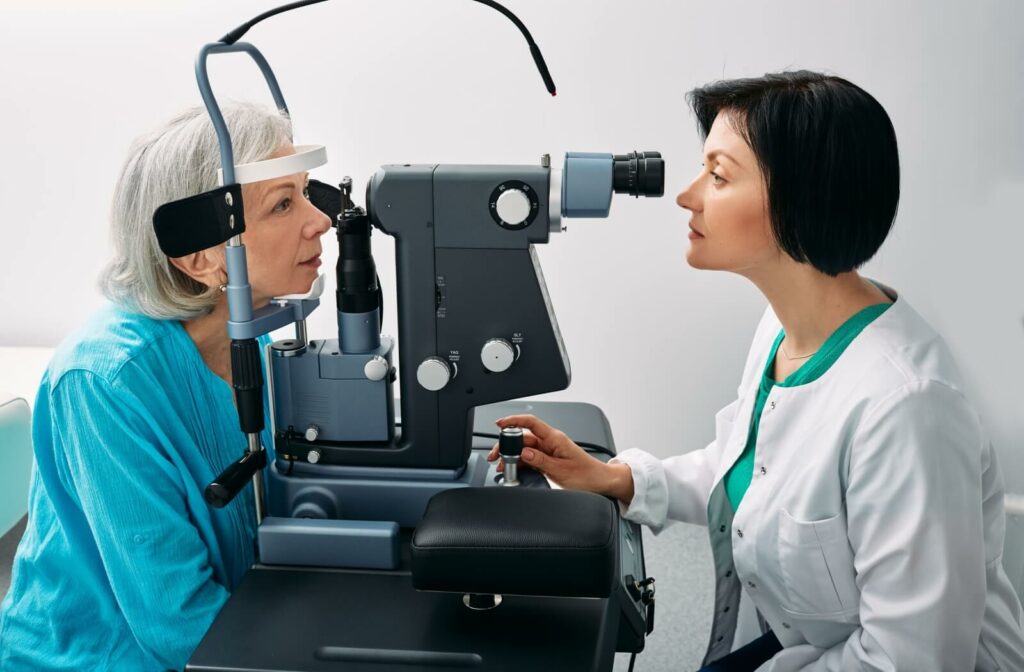The Value of Regular Check-Ups with an Eye Doctor Optometrist
The Value of Regular Check-Ups with an Eye Doctor Optometrist
Blog Article
Discovering the most recent Technical Improvements in Optometry and What They Mean for Eye Doctors
In the ever-evolving field of optometry, current technological advancements are improving how specialists come close to eye care. From the accuracy of Optical Coherence Tomography to the nuanced understandings provided by AI-driven analysis tools, these technologies are setting brand-new standards in person evaluation and therapy. Teleoptometry is poised to redefine access, making sure that know-how transcends geographical restrictions. As these advancements penetrate the technique, optometrists are confronted with the challenge of accepting these devices to enhance person outcomes. The inquiry stays: how will these technical changes redefine the duties and duties within the profession?
Innovations in Diagnostic Devices
Progressing the field of optometry, developments in analysis tools have actually revolutionized the method eye treatment specialists examine and diagnose visual impairments and eye conditions. The past decade has experienced significant technological innovations, enabling even more thorough and exact examinations. Optical Comprehensibility Tomography (OCT), as an example, offers high-resolution cross-sectional photos of the retina, permitting the early detection of illness such as glaucoma and age-related macular degeneration. This non-invasive imaging technique has ended up being indispensable in contemporary optometric technique.
Another trick advancement is the intro of innovative corneal topography systems, which map the surface curvature of the cornea with precision. These devices are specifically beneficial for suitable get in touch with lenses and identifying corneal disorders. In addition, digital retinal imaging has transformed standard ophthalmoscopy, offering in-depth, scenic views of the retina that facilitate detailed aesthetic evaluations.
The advancement of wavefront aberrometry has also been essential, making it possible for the evaluation of refractive errors with unmatched precision (Eye Doctor Optometrist). This innovation helps in tailoring corrective lenses and enhancing surgical results for refractive surgeries. Collectively, these analysis improvements empower eye doctors to deliver premium client treatment, ensuring very early intervention and tailored treatment methods, ultimately enhancing visual health end results
AI in Person Management
Structure on the foundation of advanced diagnostic tools, the consolidation of artificial intelligence (AI) in person administration represents a transformative leap for optometry. AI systems are increasingly utilized to enhance effectiveness, precision, and customization in individual care.
Additionally, AI-driven platforms help with streamlined patient interactions and administrative procedures. Automated organizing, digital assessments, and individualized follow-up strategies not just enhance client contentment but additionally optimize time monitoring for experts. These systems can triage people based upon the necessity of their problems, ensuring that those in important requirement receive timely attention.
Moreover, AI boosts decision-making by offering eye doctors with evidence-based recommendations and therapy pathways. By integrating data from digital health and wellness records, AI tools provide understandings that notify clinical decisions, reducing the danger of mistakes and enhancing patient results. As AI remains to advance, its duty in individual monitoring will likely increase, improving the landscape of optometric treatment.
Advances in Retinal Imaging
In the realm of optometry, retinal imaging has actually experienced impressive technological improvements that are boosting analysis capabilities and individual care. Innovations such as Optical Comprehensibility Tomography (OCT) and fundus photography have transformed how optometrists picture and examine the retina. OCT, in specific, provides high-resolution, cross-sectional pictures of the retina, permitting the comprehensive evaluation of its layers. This ability is vital for early detection and monitoring of problems like glaucoma, diabetic retinopathy, and age-related macular deterioration.
Improved imaging modalities like OCT angiography are more refining diagnostic accuracy. This non-invasive strategy maps blood flow in the retina, using essential understandings right into vascular health and wellness without the demand for dye injections. In addition, flexible optics innovation is being incorporated right into retinal imaging systems to fix ocular aberrations, providing unmatched photo clarity. Such developments help with the recognition of minute retinal adjustments that might signify condition progression.
Additionally, improvements in expert system are enhancing retinal imaging by allowing computerized evaluation of huge datasets. These systems assist optometrists in identifying patterns a sign of pathology, therefore enhancing diagnostic accuracy and effectiveness. Jointly, these developments are transforming retinal imaging into a foundation of modern eye care, boosting end results and increasing restorative possibilities.
Teleoptometry's Expanding Function
Teleoptometry is significantly coming to be an important component of eye care, driven by advancements in data and diagnostic tools. As view it now optometry accepts digital makeover, teleoptometry promotes remote consultations, permitting optometrists to expand their services past typical limits. This is particularly useful in country and underserved locations where access to specialized eye care is commonly minimal. By leveraging high-resolution video conferencing and advanced retinal imaging, optometrists can perform comprehensive eye tests from afar, guaranteeing prompt diagnosis and treatment.
The assimilation of artificial knowledge (AI) more improves teleoptometry, enabling the analysis of visual information and helping in the discovery of ocular problems such as glaucoma and diabetic person retinopathy. AI-powered formulas can swiftly interpret complicated imaging data, giving eye doctors with important insights that reinforce clinical decision-making.
Furthermore, teleoptometry supports continuity of care through smooth combination with electronic wellness records (EHRs), permitting optometrists to maintain thorough patient histories. This makes sure that people get customized and consistent care even when seeking advice from with various experts.
Despite these advantages, challenges remain, consisting of making certain data safety and taking care of person assumptions. Nevertheless, teleoptometry represents a considerable stride towards more easily accessible, reliable, and patient-centered eye care. As technology progresses, its duty is positioned to increase better.

Future Fads in Eye Care
A myriad of ingenious trends is established to reshape the future of eye care, driven by technological developments and the advancing demands of patients. One considerable fad is the integration of expert system (AI) in diagnostics, which assures to improve the accuracy and effectiveness of eye exams. AI formulas can evaluate large quantities of data from retinal images, potentially identifying conditions like diabetic person retinopathy and glaucoma earlier than typical techniques.
In addition, personalized medicine is gaining grip in optometry, with genetic screening educating tailored therapy strategies. This method intends to maximize client end results by customizing treatments to individual genetic profiles. Wearable technology, such as smart get in touch with lenses, is additionally coming up, providing real-time surveillance of intraocular stress or sugar degrees, hence supplying continual insights into systemic and ocular health and wellness.
The fostering of enhanced truth (AR) and digital truth (VR) in training and over at this website individual education and learning is another arising pattern. These innovations supply immersive experiences that can enhance understanding and abilities both for optometrists and patients. As these fads evolve, optometrists should stay abreast of technical developments to offer innovative treatment, making certain improved individual results and satisfaction in the dynamic landscape of eye care.
Final Thought

Collectively, these analysis developments encourage eye doctors to supply remarkable person care, making certain very early treatment and customized treatment methods, inevitably improving aesthetic health and wellness outcomes.

As these innovations proceed to develop, optometrists have to adapt and integrate them right into practice, eventually enhancing operations effectiveness and boosting the criterion of eye care provided to individuals.
Report this page